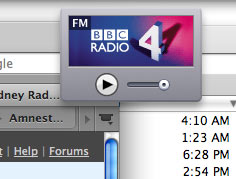Download Mac software in the Dashboard Widgets category. Create keyboard shortcuts for simple or highly complex strings of actions, on your desktop and in various applications, by just recording yourself performing the steps. How To Add Dashboard Widgets To Mac Desktops Using macOS High Sierra or Sierra. Move Mac Dashboard Widgets To Desktop in macOS High Sierra 10.13 or Sierra 10. In order to open Dashboard, just click it’s icon in the dock. This translucent screen lies on top of your desktop. Nothing underneath is disturbed. To open the Dashboard and access the Mac widgets, you either click the Dashboard icon in the dock or press the F12 key or F4 on the new Apple aluminum keyboard. Pressing the key again closes Dashboard. You can exit also by clicking anywhere other than on a widget. Many of the widgets are of Apple apps, such as Calendar, Reminders, and Podcasts, while others show info collected from the internet. Rearrage widgets To move a widget, click and drag it to the.

MacOS comes with a Dashboard, wherein you get widgets, apps designed to use a function or access a service. Widgets allow you to quickly access apps by switching to the Dashboard environment.
Apple designed the Dashboard so that widgets could run in a protected area. To understand it better, you can think of it as a Sandbox. Therefore, to enter the Dashboard app, you need to leave the Mac desktop.
However, this makes widgets a separate part on your Mac, which seems to be inconvenient to access. Would it not be great if widgets could exist on your desktop?
Well, it is possible. Apple even provides the steps for developers to let them test and debug their widgets on their desktop during development.
In this post, we have discussed how to add widgets to Mac desktop.
How To Add Widgets To Mac Desktop?
You can get your widgets on your desktop using Terminal. We need to enable Dashboard development mode using Terminal.
Step 1: Click on Go->Utilties-> Terminal.
Once Terminal is launched, type in
- defaults write com.apple.dashboard devmode YES
Now, Hit Return
Note: Please make sure you enter the command in a single line in the Terminal app.
Step 2: Now type the below command into Terminal:
killall Dock
Hit Return
Note: Make sure the case of the text matches as the above.
This will make your Dock vanish for a second.
Step 3: Now type the below command on your Terminal to end the current session:
exit
Press Return or enter.
Now close the Terminal app.
Once done, you need to follow a few more steps:
Step 4: Move A Widget To The Desktop
Now that you are done with Terminal commands, you need to follow some additional steps:
If you have OS X Mountain Lion or Earlier, then follow these steps:
Note: Please make sure F-Lock is enabled
- Press F12 or click Dashboard icon from Dock. Now select widget by clicking it and press the mouse button. Keep pressing the mouse button until the next step is completed.
- Press F12 again and drag the widget to desktop at any preferred location. Once the widget is placed, let go of the mouse button.
If you have a newer version of macOS than above, then follow these steps:
- Go to System Preferences (locate it from Apple menu)
- Select Mission Control.
- Locate Dashboard, from the drop-down menu, select As Overlay instead of As Space (in case of Yosemite, El Capitan. and macOS Sierra). Remove checkmark beside Show Dashboard as Space (in case of Mountain Lion or Mavericks)
- Press F12 and get Dashboard icon. Select the widget and press the mouse button.
- Keep the mouse button pressed and press F12 and drag the widget to the desktop. Once the widget is on desktop, release the mouse button.
Additional Tip: You can always place the widgets back in Dashboard, for that: Click on widget and press mouse button. Now don’t release the mouse button and press F12 and drag it to a preferred location on Dashboard.
Countdown Widget For Desktop Mac
To disable Dashboard Development Mode, you need to follow the same steps as we have followed in the first section. Only different would be in the first command,
- defaults write com.apple.dashboard devmode NO
Instead of Yes, you need to type No after the command and hit Enter to execute the command. Followed by the two commands,
- killall Dock
exit
So, in this way you can add widgets to your Mac desktop. Widgets on your desktop seem to be a great option to improve productivity, however, it is not recommended to keep widgets on the desktop if you have a small screen.
Bonus Tip: If you want to get third-party apps as a widget on your Mac desktop, you can always use Flotato app to get web apps of any of the websites you frequently use.
Read this to know more about Flotato app.
Liked the article? Please share your thoughts in the comments section below.
If you want to get all the updates, please subscribe to our Newsletter.
Stocks User Guide
Use the Stocks app on Mac to view stock quotes, interactive charts, and top business news.
Open the Stocks app
On your Mac, click the Finder icon in the Dock to open a Finder window.
Click Applications in the Finder window sidebar, then double-click the Stocks app .
App For Mac Desktop
View stocks in Notification Center
For a quick look at the stock market, check the Stocks widget in Notification Center on your Mac.
Desktop Calendar Widget For Mac
On your Mac, click the Notification Center icon in the menu bar.
Click Today, then scroll down to the Stocks widget.
Ask Siri. Siri can answer general stock queries for you. Say something like:
Widget App For Mac Desktop
“What’s the ticker symbol for Apple?”
“How’s the market doing today?”
Imac Widgets
